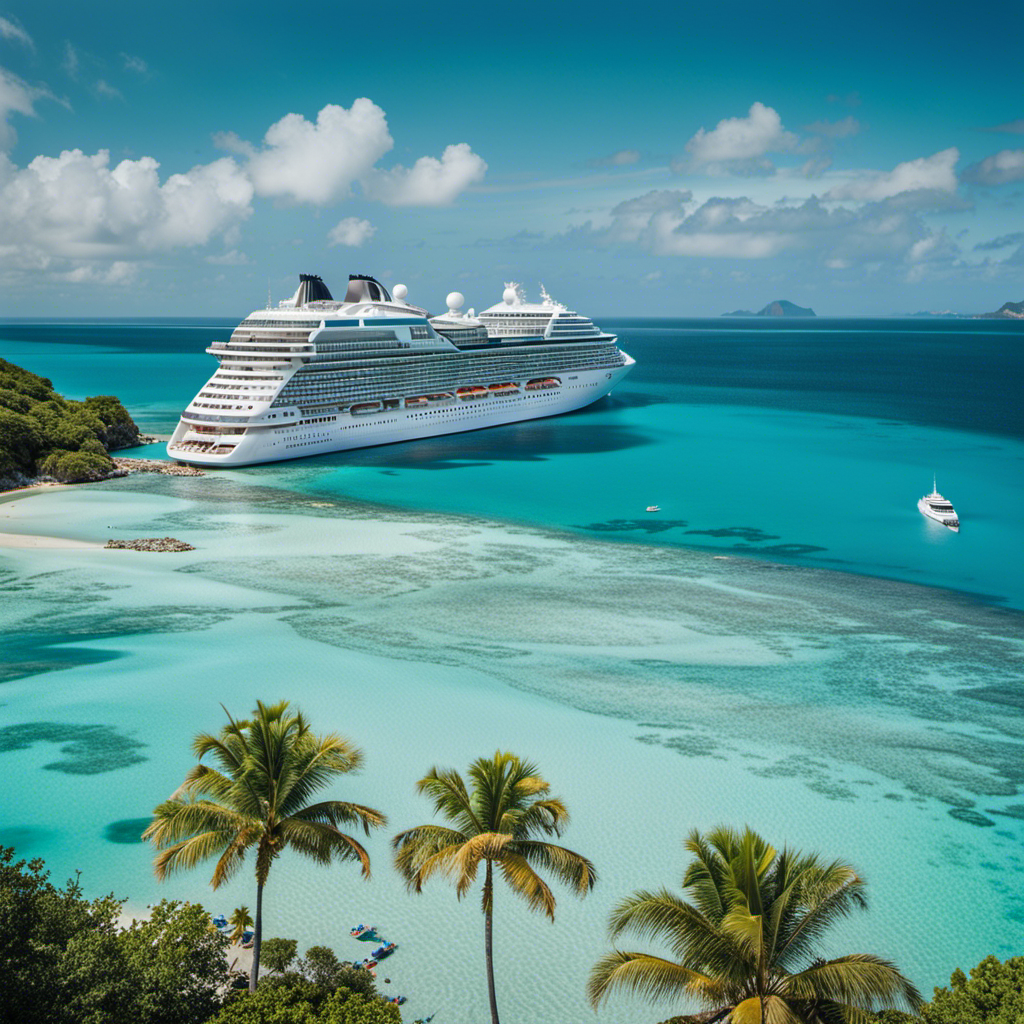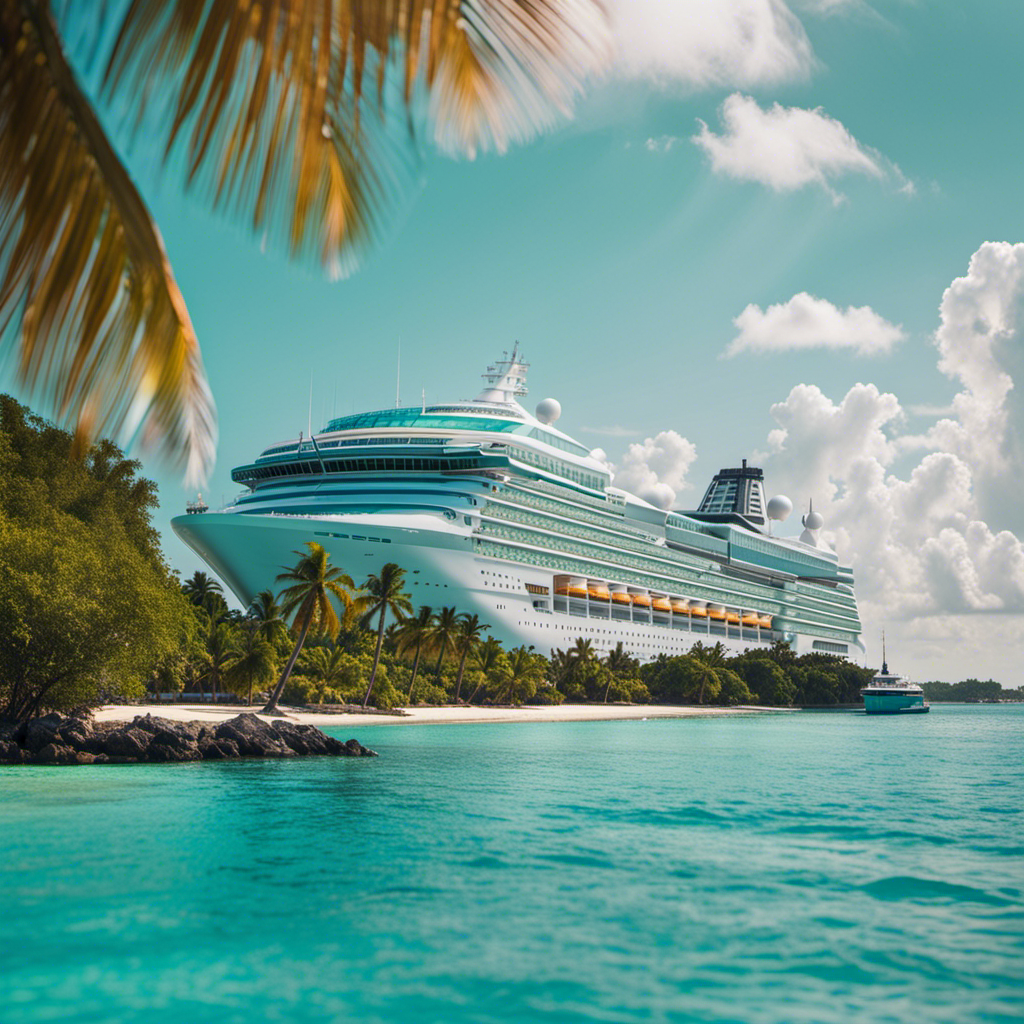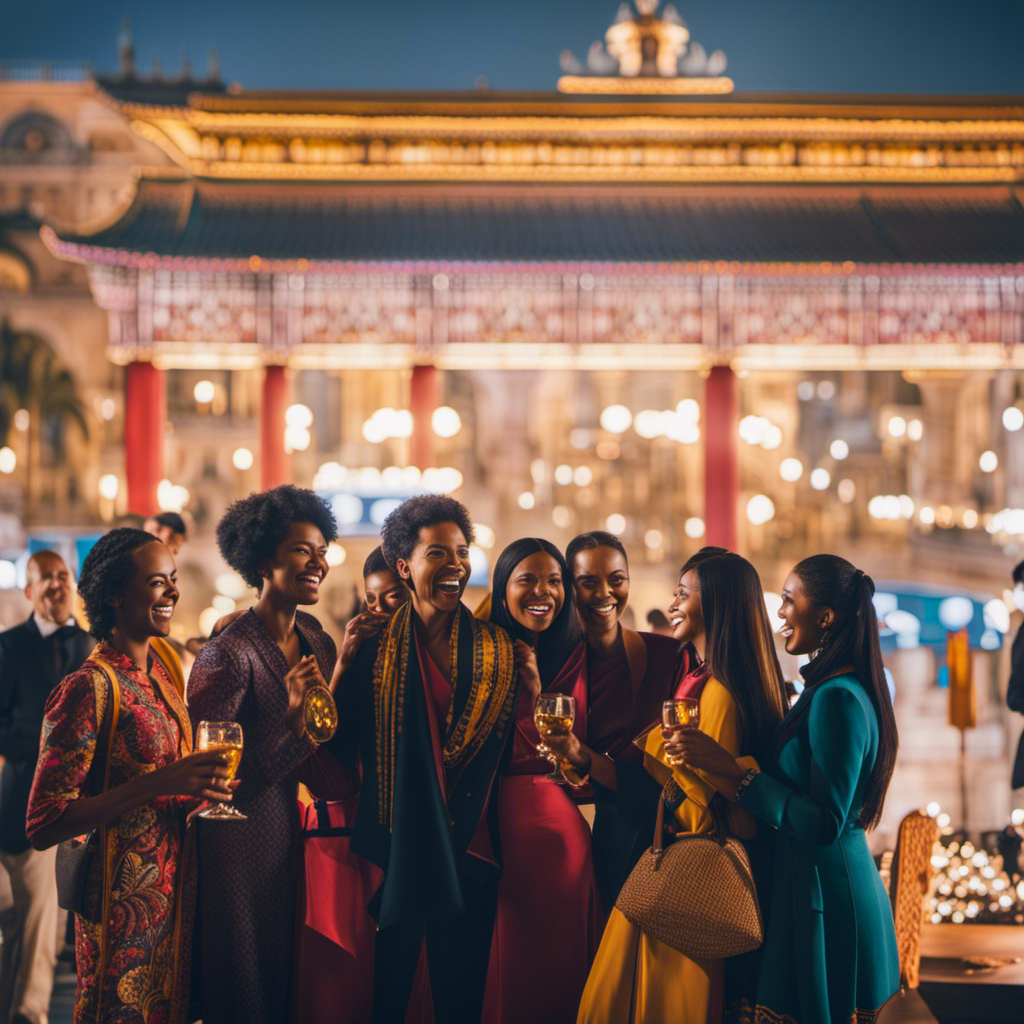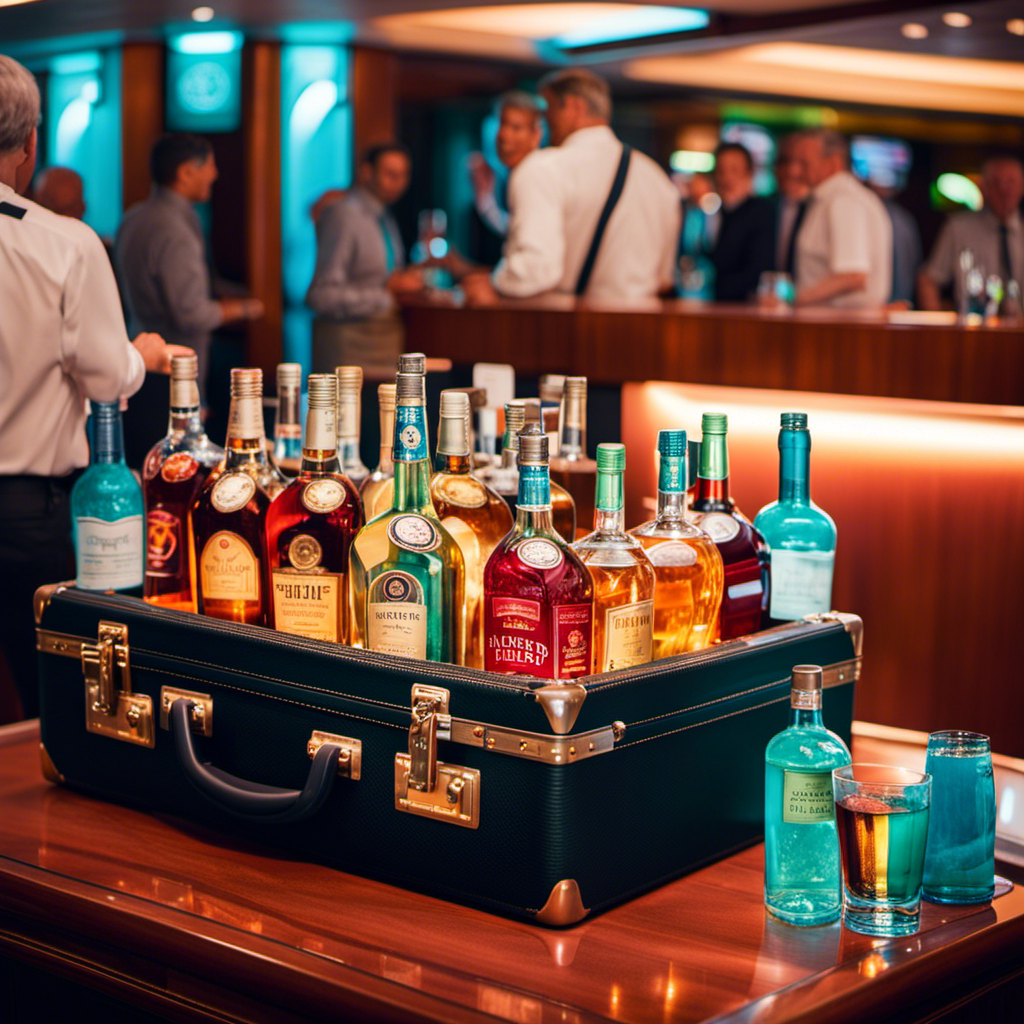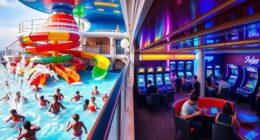I’m excited to share the news that Viking Ocean Cruises is launching its flagship, Viking Star, in North America and the Caribbean! Starting in September 2016, Viking Star will begin its voyages across the North Atlantic, offering a unique perspective for those interested in a fresh Caribbean experience. With itineraries that honor the routes of Viking traders and visits to historical Norse settlements over a thousand years old, this initiative is set to broaden horizons and create unforgettable experiences. Dive into the details of these intriguing new offerings.
Key Takeaways
- Viking Ocean Cruises is expanding sailings to North America and the Caribbean.
- The itineraries along the east coast of North America and the Caribbean are created to honor early Viking trade routes.
- The In the Wake of the Vikings itinerary offers a comprehensive North Atlantic experience, with stops at various Viking historical sites.
- The West Indies Explorer itinerary provides a diverse exploration of the Caribbean islands, with multiple departure dates available.
New Itineraries in North America & Caribbean
I’m excited about the new itineraries Viking Ocean Cruises is offering along the east coast of North America and the Caribbean. The Viking Star expansion is having a significant impact on the cruise industry, providing travelers with unique opportunities for Caribbean exploration. These itineraries go beyond the typical Caribbean cruises, offering a chance to sail the North Atlantic and explore original Viking routes. Guests can visit Norse settlement sites over 1,000 years old, honoring early Viking trade routes. One such itinerary, "In the Wake of the Vikings," takes passengers on a 15-day journey from Bergen to Montreal, stopping at the Shetland Islands, Faroe Islands, Iceland, Greenland, and Newfoundland. Another option is the "Eastern Seaboard Explorer," a 13-day itinerary from Montreal to New York, with stops at Quebec City, Prince Edward Island, Halifax, and an overnight stay in Boston. For those looking for a Caribbean adventure, the "West Indies Explorer" is an 11-day itinerary from San Juan to San Juan, visiting Tortola, Antigua, St. Lucia, Barbados, Guadeloupe, St. Kitts, St. Martin, and St. Thomas. These new itineraries provide a unique and comprehensive exploration of North America and the Caribbean, allowing travelers to broaden their horizons and experience destinations beyond the expected.
Crossing the North Atlantic
Sailing across the North Atlantic in September 2016 broadens my horizons and provides a comprehensive North Atlantic experience. As part of Viking Star’s transatlantic journey and North American expansion, this voyage offers a unique opportunity to explore Viking history and culture. The Viking Star, a luxurious cruise ship, will embark on a 15-day itinerary from Bergen to Montreal, stopping at fascinating destinations along the way. From the Shetland Islands and Faroe Islands to Iceland, Greenland, and Newfoundland, this journey traces the original Viking routes. Additionally, Viking Ocean Cruises has created new itineraries along the east coast of North America and the Caribbean, offering a refreshing alternative to typical Caribbean cruises. These itineraries honor early Viking trade routes and allow guests to visit Norse settlement sites that are over 1,000 years old. The Viking Star’s North American expansion truly offers a unique and enriching travel experience.
Return to Europe in February 2017
Returning to Europe in February 2017, I am excited to continue exploring new destinations and unique itineraries with Viking Ocean Cruises. After its successful crossing of the North Atlantic, the Viking Star is set to make its European return. This return marks an exciting chapter for Viking Ocean Cruises as it expands its sailings to North America and the Caribbean. With the aim of broadening travelers’ horizons, the founder and chairman, Torstein Hagen, has created itineraries that honor early Viking trade routes and offer a unique alternative to typical Caribbean cruises. One such itinerary, "In the Wake of the Vikings," takes guests on a comprehensive 15-day journey from Bergen to Montreal, making stops at historic Viking sites along the way. So, get ready to set sail and experience the wonder and beauty of Europe with Viking Ocean Cruises starting this February.
Broadening Travelers’ Horizons
With the aim of expanding horizons, Viking Ocean Cruises offers itineraries that take guests to unique destinations and provide experiences beyond the expected. As a traveler, I appreciate the expansion opportunities that Viking Star brings to North America and the Caribbean. The itineraries created by Viking honor the early Viking trade routes, allowing guests to visit Norse settlement sites that are over 1,000 years old. This cultural immersion provides a rare and insightful look into Viking history. Whether sailing the North Atlantic and exploring original Viking routes or experiencing the diverse exploration of the Caribbean islands, Viking Star offers more time in port and experiences that go beyond the typical Caribbean cruises. I am excited to broaden my horizons and embark on a journey that combines relaxation with educational and immersive experiences.
Honoring Viking Trade Routes in North America
Exploring the North Atlantic and visiting Norse settlement sites that are over 1,000 years old is a unique and educational way to honor Viking trade routes in North America. These sites offer a glimpse into the rich history and culture of the Vikings, allowing us to immerse ourselves in their world. Walking through these ancient settlements, we can imagine what life was like for the Norse people who once called these places home. The remnants of their dwellings, artifacts, and burial grounds provide valuable insights into their daily lives and traditions. It is truly fascinating to witness firsthand the legacy of the Vikings and to gain a deeper understanding of their impact on North America. By exploring these Norse settlement sites, we can pay tribute to their remarkable trade routes and the enduring influence of Viking history and culture.
In the Wake of the Vikings Itinerary
Sailing on the In the Wake of the Vikings itinerary allows me to experience a comprehensive journey through Viking history and culture, visiting destinations such as Greenland, Newfoundland, and Quebec City. This 15-day itinerary takes us on a thrilling adventure through the North Atlantic, following the footsteps of the Vikings. We will explore the rugged beauty of the Shetland Islands and the Faroe Islands before making our way to Iceland, where we can immerse ourselves in the rich Viking history that still echoes through the land. From there, we will sail to Greenland, a land of stunning glaciers and fjords, and then continue on to Newfoundland, where we can visit ancient Norse settlement sites. The journey concludes in Saguenay, Quebec City, and Montreal, offering a truly comprehensive North Atlantic experience. Get ready to embark on a once-in-a-lifetime Viking history exploration.
Exploring the Eastern Seaboard and West Indies
After immersing myself in the rich history and culture of the Viking settlements along the North Atlantic, I was ready for the next leg of my Viking Star adventure. The Eastern Seaboard Explorer itinerary promised to take me on a thrilling journey along the stunning east coast of North America. From the vibrant city of Montreal to the iconic New York City, I would have the opportunity to explore charming towns like Quebec City and Halifax, and even spend an overnight stay in Boston. As I cruised along the St. Lawrence River, I couldn’t help but be captivated by the breathtaking landscapes and picturesque harbors. But the adventure didn’t stop there. Viking Star’s West Indies Explorer itinerary offered a chance to indulge in some island hopping experiences in the Caribbean. From the mesmerizing beauty of St. Lucia to the vibrant culture of Barbados, each stop along the way promised a unique and unforgettable experience. The Viking Star expansion truly allowed me to embark on a journey filled with east coast adventures and island hopping delights.
Frequently Asked Questions
What Are the Specific Dates and Departure Ports for the Viking Star’s North American and Caribbean Itineraries?
The departure dates and departure ports for Viking Star’s North American and Caribbean itineraries are not provided in the current question. However, these itineraries offer a unique exploration of the region’s history and culture.
Are There Any Special Activities or Events Planned on Board the Viking Star During the North American and Caribbean Sailings?
During the North American and Caribbean sailings, there will be special activities and events planned on board the Viking Star. However, there may be age restrictions and limitations for passengers participating in certain activities.
What Is the Average Cost of a Viking Star Cruise to North America and the Caribbean?
The average cost of a Viking Star cruise to North America and the Caribbean varies depending on the itinerary and booking options. There are different packages available to suit different budgets and preferences.
Are There Any Age Restrictions or Limitations for Passengers on the Viking Star’s North American and Caribbean Sailings?
There are no age restrictions or passenger limitations on Viking Star’s North American and Caribbean sailings. Everyone is welcome to embark on this exciting journey and explore new horizons.
Are There Any Specific Health and Safety Protocols in Place for Passengers Traveling on the Viking Star to North America and the Caribbean?
Yes, there are health and safety protocols in place for passengers on the Viking Star. These protocols ensure passenger safety and include requirements such as regular testing, enhanced cleaning measures, and social distancing guidelines.
Conclusion
I’m thrilled to share the exciting news that Viking Ocean Cruises is expanding its sailings to North America and the Caribbean! With new itineraries along the east coast, travelers can now embark on remarkable journeys that honor Viking trade routes and offer unique alternatives to typical Caribbean cruises. From the comprehensive ‘In the Wake of the Vikings’ itinerary to the captivating ‘Eastern Seaboard Explorer’ and ‘West Indies Explorer’ itineraries, there are so many incredible destinations to explore. So why not set sail and let Viking Star take you on a memorable adventure, where history and beauty collide?
Meet Asra, a talented and adventurous writer who infuses her passion for exploration into every word she writes. Asra’s love for storytelling and her insatiable curiosity about the world make her an invaluable asset to the Voyager Info team.
From a young age, Asra was drawn to the power of words and their ability to transport readers to far-off lands and magical realms. Her fascination with travel and cultures from around the globe fueled her desire to become a travel writer, and she set out on a journey to turn her dreams into reality.

